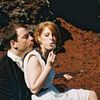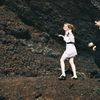1.9.2008 | 15:30
Fyrirlestur nóbelsveršlaunahafans Susumu Tonegawa
Ég skelli hér inn tilkynningu um fyrirlestur Susumu Tonegawa, sem eftir minni bestu vitund er öllum opinn:
Fyrirlestur nóbelsveršlaunahafans Susumu Tonegawa veršur haldinn laugardaginn 6. september kl. 14.00-15.00 ķ hśsakynnum Hįskólans ķ Reykjavķk, Ofanleiti 2, stofu 101. Fyrirlesturinn er ķ boši Tękni- og verkfręšideildar Hįskólans ķ Reykjavķk ķ samstarfi viš Taugavķsindafélag Ķslands.
Yfirskrift fyrirlestursins er "Molecular, cellular, and circuit mechanisms for hippocampal learning and memory" og śtdrįtt śr honum mį sjį hér aš nešan.
Abstract
We study molecular, cellular, and neuronal circuit mechanisms underlying acquisition, consolidation and retrieval of hippocampus-dependent memory in rodents. Our primary approach is to generate cell type and adult-restricted knockout mice and characterize them using multifaceted methods including molecular and cellular biology, in vitro and in vivo electrophysiology, confocal and two photon microscopy and behavioral tasks. The data obtained to date indicate that NMDA receptor-mediated synaptic plasticity in area CA1 plays a pivotal role in special and other hippocampus dependent learning and memory. The same receptors and synaptic plasticity in area CA3 are dispensable for the acquisition of reference memory, but play an important role in "pattern completion"-the ability to recall an entire experience with limited recall cues as well as in one trial-based rapid learning. NMDA receptor function in dentate gyrus (DG) is also dispensable for reference memory, but is important in "pattern separation," the ability to form distinct memories of similar events. These studies attest the power of this multi-faceted – genetic, physiological and behavioral – approach in understanding mechanisms underlying cognition.
Susumu Tonegawa er meš doktorspróf ķ sameindalķffręši frį hįskólanum ķ Kalifornķu ķ San Diego. Hann var nżdoktor viš Salk Institute en gekk sķšan til lišs viš Ónęmisfręšistofnunina ķ Basel (Basel Institute for Immunology). Įriš 1981 varš hann prófessor ķ lķffręši viš MIT og hóf rannsóknir viš Rannsóknarstofnun ķ krabbameinsfręšum (Center for Cancer Research). Hann stofnaši Center for Learning and Memory viš MIT įriš 1994.
Dr. Tonegawa hefur hlotiš fjölmargar višurkenningar fyrir rannsóknir sķnar, žar į mešal fékk hann Nóbelsveršlaunin ķ lķfešlisfręši eša lęknavķsindum įriš 1987.
Meira um Tonegawa:
Bloggar | Slóš | Facebook | Athugasemdir (0)
27.8.2008 | 17:46
Mognud rannsokn
Ekki skal eg daema um hvort thessi rannsokn standist timans tonn, en ad theim skuli hafa dottid i hug ad framkvaema hana...
Magnetic alignment in grazing and resting cattle and deer
- Sabine Begall*,†,
- Jaroslav Červenż‡,§,
- Julia Neef*,
- Oldřich Vojtčch‡,¶, and
- Hynek Burda*
+Author Affiliations
Edited by Simon A. Levin, Princeton University, Princeton, NJ, and approved July 17, 2008 (received for review April 15, 2008)
Abstract
We demonstrate by means of simple, noninvasive methods (analysis of satellite images, field observations, and measuring “deer beds” in snow) that domestic cattle (n = 8,510 in 308 pastures) across the globe, and grazing and resting red and roe deer (n = 2,974 at 241 localities), align their body axes in roughly a north–south direction. Direct observations of roe deer revealed that animals orient their heads northward when grazing or resting. Amazingly, this ubiquitous phenomenon does not seem to have been noticed by herdsmen, ranchers, or hunters. Because wind and light conditions could be excluded as a common denominator determining the body axis orientation, magnetic alignment is the most parsimonious explanation. To test the hypothesis that cattle orient their body axes along the field lines of the Earth's magnetic field, we analyzed the body orientation of cattle from localities with high magnetic declination. Here, magnetic north was a better predictor than geographic north. This study reveals the magnetic alignment in large mammals based on statistically sufficient sample sizes. Our findings open horizons for the study of magnetoreception in general and are of potential significance for applied ethology (husbandry, animal welfare). They challenge neuroscientists and biophysics to explain the proximate mechanisms.
Bloggar | Slóš | Facebook | Athugasemdir (0)
6.8.2008 | 06:05
Langalangalangalangalang...

Samkvęmt Neurotree lęrši ég taugavķsindi af fręšimanni sem lęrši af öšrum sem lęrši af öšrum og svo koll af kolli žar til komiš er aš engum öšrum en Vilhjįlmi af Ockham (um 1288 - 1348). Hann var žvķ fręšilegur langalangalangalangalangalangalang-og-svo-framvegis-afi minn. Žaš finnst mér magnaš.
Žess mį einnig geta aš Niels Bohr er langalangalangafi minn og B. F. Skinner, William James, Wilhelm Wundt og Sigmund Freud eru allir langalangalangalangalangafar mķnir.
Bloggar | Breytt s.d. kl. 06:15 | Slóš | Facebook | Athugasemdir (0)
6.8.2008 | 00:08
Virtir visindamenn til Islands
Eg var ad lesa a heimasidu Taugavisindafelags Islands ad baedi nobelsverdlaunahafinn Susumo Tonegawa og nystirnid Karl Deisseroth seu vaentanlegir til landsins a naestu manudum. Tonegawa rannsakar nam og minni, og Deisseroth var held eg orugglega fyrstur manna til ad fa "ljoserfdafradi" (optogenetics) til ad virka. Deisseroth hefur komid og talad herna i Brown University. Ef eg man rett er veira notud til ad spyta erfdaefni inn i taugafrumur, og thetta erfdaefni kodar fyrir ljosnaemu jonahlidi. Thaer taugafrumur sem taka upp erfdaefnid fara ad bua til slik jonahlid. Med thvi ad lysa ljosi af tiltekinni bylgjulengd inn i heilann er haegt ad opna thessi jonahlid, sem aftur veldur bodspennu i frumunum. Thessi taekni gerir manni kleift ad virkja tiltekinn hop taugafrumna ad vild. Hun hefur til ad mynda verid notud til ad "fjarstyra" musum.
Her ma finna yfirlitsgrein um thessa taekni.
Vel af ser vikid, Taugavisindafelag Islands!
Bloggar | Breytt s.d. kl. 00:10 | Slóš | Facebook | Athugasemdir (1)
10.7.2008 | 01:38
Heimskur er hįlęršur mašur
Ég rakst į stutta grein eftir Martin A. Schwartz sem nefnist "The importance of stupidity in scientific research". Höfundurinn fjallar um žį allžekktu stašreynd aš žaš er ekki sérlega gott fyrir sjįlfstraustiš aš stunda framhaldsnįm; stóri fiskurinn ķ litlu tjörninni er allt ķ einu fluttur ķ risastóra stöšuvatniš meš rįnfiskunum -- afsakiš heldur bagalega tilraun til samlķkingar. Scwartz tekur žó žann óvenjulega pól ķ hęšina aš žaš sé ekki bara venjulegt heldur ęskilegt aš finnast mašur ekki vita neitt, žvķ vķsindi snśist um aš reyna aš komast til botns ķ žvķ sem ekki er vitaš:
I recently saw an old friend for the first time in many years. We had been Ph.D. students at the same time, both studying science, although in different areas. She later dropped out of graduate school, went to Harvard Law School and is now a senior lawyer for a major environmental organization. At some point, the conversation turned to why she had left graduate school. To my utter astonishment, she said it was because it made her feel stupid. After a couple of years of feeling stupid every day, she was ready to do something else.
I had thought of her as one of the brightest people I knew and her subsequent career supports that view. What she said bothered me. I kept thinking about it; sometime the next day, it hit me. Science makes me feel stupid too. It's just that I've gotten used to it. So used to it, in fact, that I actively seek out new opportunities to feel stupid. I wouldn't know what to do without that feeling. I even think it's supposed to be this way. Let me explain...
Bloggar | Slóš | Facebook | Athugasemdir (4)
28.6.2008 | 17:46
Dance Dance Party Party!
Ķ gęr fór ég meš Emily og Teegan į Dance Dance Party Party. Ķ DDPP žarf aš fylgja žremur reglum: Engir strįkar, ekkert įfengi og ekki dęma neinn. Žeir sem žekkja mig vita aš mér finnst ekkert skemmtilegra en aš dansa, og žvķ vitleysislegri sem dansinn er žvķ betra. Viš męttum į stašinn, dönsušum af okkur rassinn og fengum afnot af hinum żmsu hjįlpartękjum svo sem ballerķnupilsum, fjöšrum, sólgleraugum og hślahringjum. Ég ętla svo sannarlega aftur og er strax bśin aš įkveša aš ég stjórni tónlistinni undir dulnefninu DJ Ice Ice Baby. Žetta veršur aš sjįlfsögšu einnig upphafslagiš:
Bloggar | Slóš | Facebook | Athugasemdir (0)
15.6.2008 | 15:49
Hver verša svišin, og hvaš um önnur sviš?

|
HĶ byggir upp afburšasviš |
| Tilkynna um óvišeigandi tengingu viš frétt | |
Bloggar | Slóš | Facebook | Athugasemdir (3)
5.6.2008 | 17:54
Žetta mun ég kenna
Allir framhaldsnemar hér žurfa aš ašstoša viš kennslu ķ a.m.k. einum kśrsi. Žeim viršist vera alveg sama žótt ég kunni ekki rass ķ bala ķ žvķ sem ég į aš kenna, svo žetta veršur -- įhugavert:
NEUR 1600 - Experimental Neurobiology
An intensive laboratory experience in neuroscience that is appropriate for students who have a basic background in Neurobiology. Students will learn and employ the classical neurophysiological techniques of extracellular recording, intracellular recording and receptive field mapping using a variety of animal species including cockroaches, sea snails and frogs. Specific experiments will include recording of sensory signals in the cockroach leg; frog sciatic nerve and sciatic nerve/muscle preparation; intracellular recording of neurons in Aplysia californica; receptive field mapping in frog skin; and visual field mapping in the frog tectum. Students will become proficient in the use of oscilloscopes, intracellular amplifiers, extracellular amplifiers, manipulators, dissecting microscopes and data acquisition using Labview software. Laboratory sessions are supplemented by informal lectures designed to introduce topics, experimental approaches, concepts, and details of laboratory equipment. Evaluation will be based on three lab reports (50%) and consistent and energetic participation in the labs (50%). Lab reports will follow the format of scientific journal articles with particular attention paid to data presentation and discussion. Upon acceptable completion of the first of two written reports, the third lab report may be given in the form of a brief talk explaining and summarizing key results.
Bloggar | Slóš | Facebook | Athugasemdir (6)
24.4.2008 | 01:32
Ķsland gamla Ķsland
Bloggar | Slóš | Facebook | Athugasemdir (0)

 andriheidar
andriheidar
 apalsson
apalsson
 arnigunn
arnigunn
 gdh
gdh
 salvor
salvor
 sesselja
sesselja
 thelmaasdisar
thelmaasdisar
 thorgnyr
thorgnyr




